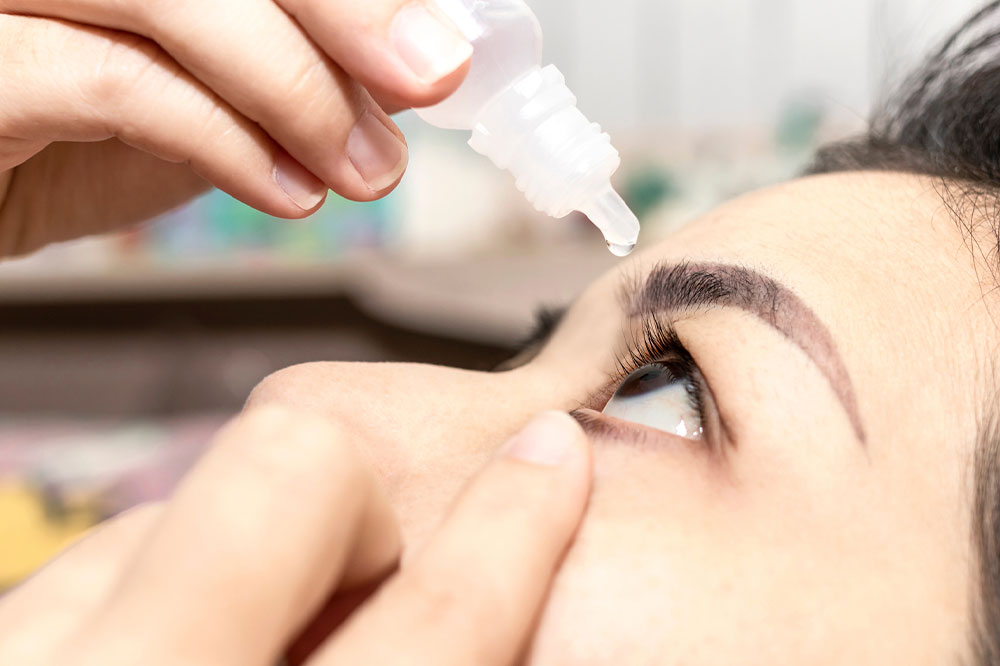
Pink eye – Understanding its causes, symptoms, and remedies
Pink eye or conjunctivitis refers to inflammation of the conjunctiva or the membrane around the eyelids and eyeballs. In this condition, the blood vessels in the conjunctiva swell up, causing reddening of the eye. Although pink eye typically does not impact vision, it can cause severe irritation and discomfort. Moreover, since pink eye is a contagious condition, one should consult a doctor at the initial stages and seek early treatment.
Causes of pink eye
- Viral infection
Most cases of pink eye are caused by viral infection, typically by adenovirus, but sometimes even by other viruses, such as herpes simplex and varicella-zoster. - Bacterial infection
Sometimes, pink eye may also spread through bacteria, such as Staphylococcus aureus, Streptococcus pneumoniae, and Haemophilus influenzae. - Fungi or parasites
In rare cases, the eye may become infected by fungi or parasites, leading to pink eye.
How does pink eye spread?
- Close contact with an infected person
Activities like handshakes and touch with individuals infected with conjunctivitis can increase one’s risk of developing the condition. - Touching contaminated surfaces
Common surfaces like keyboard, doorknobs, switches, and bed rails can be infected with bacteria or viruses causing pink eye. Touching these surfaces and then one’s face without washing one’s hands can increase the risk of pink eye. - Sharing contaminated make-up products
Individuals sharing a room or living in the same home may often share their make-up products. However, if one person is infected with pink eye, it may spread to the other person through these shared products.
Signs and symptoms
- Redness of the eye(s)
Pink eye involves inflammation of the conjunctiva, causing the blood vessels in this area to swell up. These swollen blood vessels may cause redness of the eye(s). - Difficulty opening the eyes
Individuals with conjunctivitis may experience difficulty opening their eyes, particularly in the morning. This condition is caused by accumulation of a sticky discharge in one or both eyes. - Watery eyes
Inflammation of the conjunctiva can also cause the eyes to tear up involuntarily and may be accompanied by a sticky discharge, as mentioned earlier. - Photophobia
Light sensitivity, or photophobia, is a common symptom of pink eye. This is because keratitis, or the front part of the eye, is where the cornea swells up among those with conjunctivitis. This symptom causes one to become sensitive to light. - Eye itching
Patients with pink eye may experience eye itching and a gritty sensation in one or both the eyes due to inflammation.
Remedies and management tips
If one experiences any of the symptoms of conjunctivitis, it is important to consult a doctor at the earliest as on-time treatment can help curb its spread. Besides checking out different treatment options with a doctor and following the prescribed treatment course, here are some remedies and management tips to control pink eye symptoms.
- Use lubricating eye drops
Lubricating eye drops can help soothe the eye and reduce symptoms like itchiness and redness. However, it is important to opt only for “lubricating” eye drops or “artificial tears” after consulting a doctor and avoid eye drops meant to treat “red eyes.” - Prepare and use a compress
It helps to buy a lint-free cloth and prepare a compress by soaking it in cool water. This compress, when used gently on the eye, can relieve pain and discomfort associated with pink eye. - Ensure adequate sleep
It is essential to rest one’s eyes and ensure adequate sleep and relaxation for speedy recovery from pink eye. At least eight hours of regular sleep is recommended for people with conjunctivitis. - Limit the use of gadgets
The blue light emitted from gadgets may aggravate the condition among those with pink eye. Thus, it is advisable to limit the use of mobile phones, iPads, laptops, and other gadgets while recovering from conjunctivitis. - Have foods rich in omega-3 fatty acids
Omega-3 fatty acids help reduce eye puffiness and inflammation among patients with pink eye. Thus, one should incorporate fatty fish like salmon, tuna, mackerel, and anchovies into one’s meal plan to manage pink eye symptoms. - Have vitamin and mineral-rich foods
Foods rich in essential vitamins and minerals, such as vitamins A and C and zinc, are important to heal from pink eye. Therefore, one should add citrus fruits, watermelons, leafy greens, tomatoes, bell peppers, eggs, and whole grains to their meals.
Recovering from pink eye requires one to rest the eyes completely and stay hydrated. Moreover, having nutritious meals, avoiding close contact with others around, and reducing screen time are essential aspects to facilitate speedy recovery.




